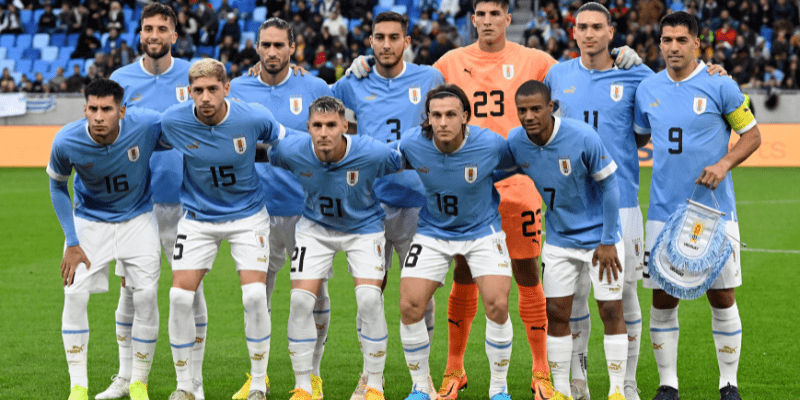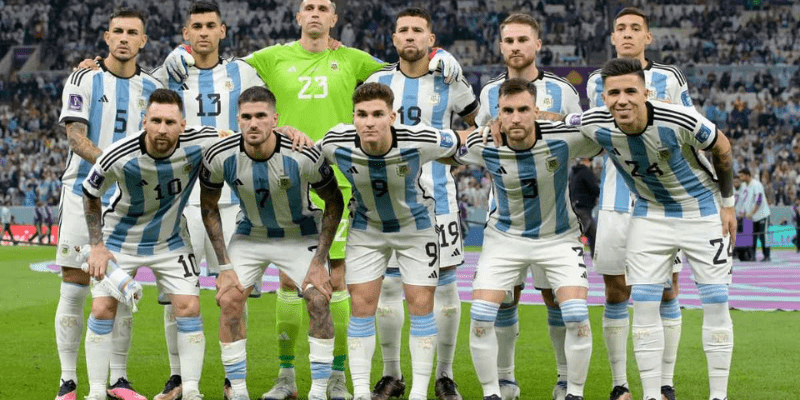From the dusty fields of early 20th-century South America to the roaring stadiums of today, the battle between Argentina and Uruguay is one of the world’s oldest and most storied football rivalries. In this article, TigerKick will guide you through the epic Argentina vs Uruguay head-to-head saga: the stats, the drama, the icons, and what to watch in future clashes.
The origins of a classic rivalry
The rivalry between Argentina and Uruguay—often dubbed the Clásico del Río de la Plata—dates back to the earliest days of international football in Latin America. Although an informal match took place in 1901, the first official encounter is traced to 20 July 1902, when Argentina routed Uruguay 6–0 in Buenos Aires. Over time, this fixture evolved, and shared identity in the Río de la Plata region made football an arena of pride and competition, beyond just sport. Over the decades, this fixture has produced legendary moments—from the “Gol Olímpico” in 1924 to the 1930 World Cup final replay—turning it into more than just a match but a ritual.
All-time record & statistical dominance

Let’s dive deep into the numbers that define Argentina vs Uruguay head-to-head.
| Metric | Argentina | Draws | Uruguay |
| Total matches played | ~213 (190 official) | — | — |
| Argentina wins | 98 | — | — |
| Draws | 52 | — | — |
| Uruguay wins | 63 | — | — |
Argentina hold the edge in the rivalry, with more victories over Uruguay in both official and unofficial clashes. In official matches, their head-to-head record tilts more decisively: Argentina with 89 wins, Uruguay 51, and 46 draws.
Some striking historical details:
- Biggest victory: That inaugural 6–0 win by Argentina in 1902 remains a high-water mark.
- World Cup finals: They clashed in the 1930 FIFA World Cup final—with Uruguay winning 4–2 in Montevideo.
- Copa América showdowns: The rivalry has also echoed through South America’s premier tournament, where each side has had moments of ascendancy.
While Uruguay once held the up, Argentina’s rise in the modern era has swayed momentum.
Recent encounters & modern context

To understand how the rivalry stands now, let’s look at recent matches and trends.
Last meetings & results
In the 2026 World Cup qualifiers, Argentina clinched a narrow 1–0 away win in Montevideo, thanks to a Thiago Almada strike. Uruguay had chances, but Argentina’s defense held firm in classic counter-attack style.
In their prior meeting in November 2023 at La Bombonera, Uruguay stunned the hosts 2–0 away—an upset that sent ripples across South America.
Recent H2H breakdowns show Argentina with 4 wins, Uruguay 1, and 2 draws. Goals have tended to be tight — games often decided by a single moment.
Tactical evolution & squad shifts
Over time, both sides have adapted. Argentina today leans on a blend of physicality, high pressing, and creativity from midfield (with players like Julián Álvarez, Rodríguez, and Almada). Uruguay often counters with solidity, quick transitions, and individual flair from names like Darwin Núñez.
In terms of form, Argentina entering recent matches has often carried momentum, especially at home in Montevideo’s Centenario.
Memorable matches & turning points

Certain matches have etched themselves permanently into the rivalry’s lore:
- 1930 World Cup Final: Uruguay’s 4–2 victory over Argentina in Montevideo cemented their status as early powerhouses.
- 1924 “Gol Olímpico”: Cesáreo Onzari of Argentina scored directly from a corner—against an Olympic champion Uruguay—and the goal gave birth to the term “gol olímpico.”
- 1978 Falklands-era tensions: Although not a direct match, political context amplified tensions when Argentina hosted the World Cup, adding emotional layers to every Uruguay game.
- 2002 qualifying match “pact” scandal: In that campaign’s final match, both sides appeared to slow their play after learning external results favored Uruguay’s qualification—sparking controversy and conspiracy theories.
- Recent qualifier scuffles: In one 2026 qualifier, tensions boiled over: Rodrigo De Paul, Manuel Ugarte, and Mathías Olivera clashed physically near Messi himself. It showed that even in an era of professionalism, old grudges still flare.
Key players & iconic names
Over the decades, each side has had superstars who left their mark:
- On Argentina’s side: Diego Maradona, Lionel Messi, Alfredo Di Stéfano, Gabriel Batistuta, and current stars like Julián Álvarez and Almada.
- For Uruguay: Héctor Scarone, José Nasazzi, Obdulio Varela, Luis Suárez, Edinson Cavani, and Darwin Núñez in modern times.
These are not just names; they shaped tactics, national identity, and moments that elevate this fixture beyond the scoreboard.
What to expect in next matches
Looking ahead, future clashes are likely to follow some trends:
- Tight scorelines: Expect 1–0, 2–1 or 0–0 — these matches often hinge on defensive discipline and brief attacking bursts.
- Midfield battles: The duels there could decide possession and rhythm—Argentina may seek control, Uruguay may play faster transitions.
- Emotional weight: Even in qualifiers or friendlies, the stakes feel higher. Passion, crowd impact, and national pride always seep in.
- Potential breakout players: Watch for younger talents like Almada or Uruguay’s emerging forwards becoming game changers.
Conclusion
In Argentina vs Uruguay head-to-head, you find more than just a matchup—it’s a tapestry of shared history, dramatic encounters, national pride, and evolving football paradigms. From century-old goal records to fiery modern qualifiers, every showdown brings fresh chapters to the legend.
If you’re a football fan who wants to revisit iconic matches, explore player stats, or keep abreast of upcoming clashes, TigerKick is your go-to source. Dive dee, compare head-to-heads for other rivalries, or stay updated on transfer news through our site. This rivalry never grows old—and there’s always more to discover.



